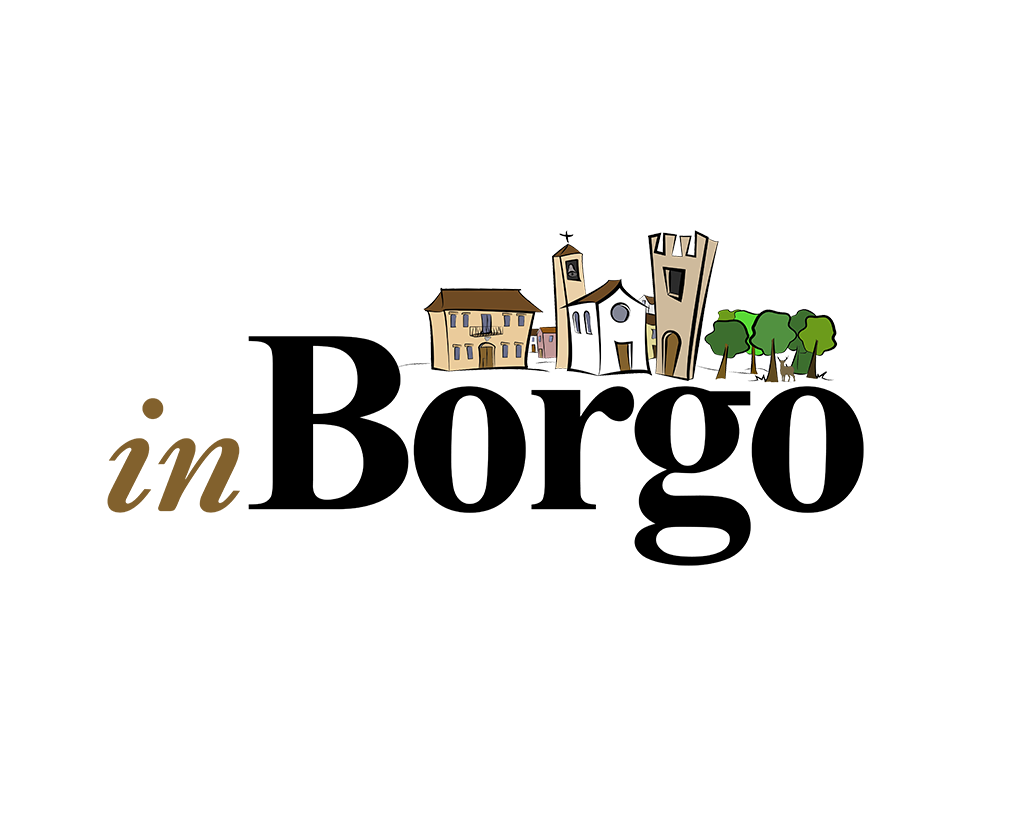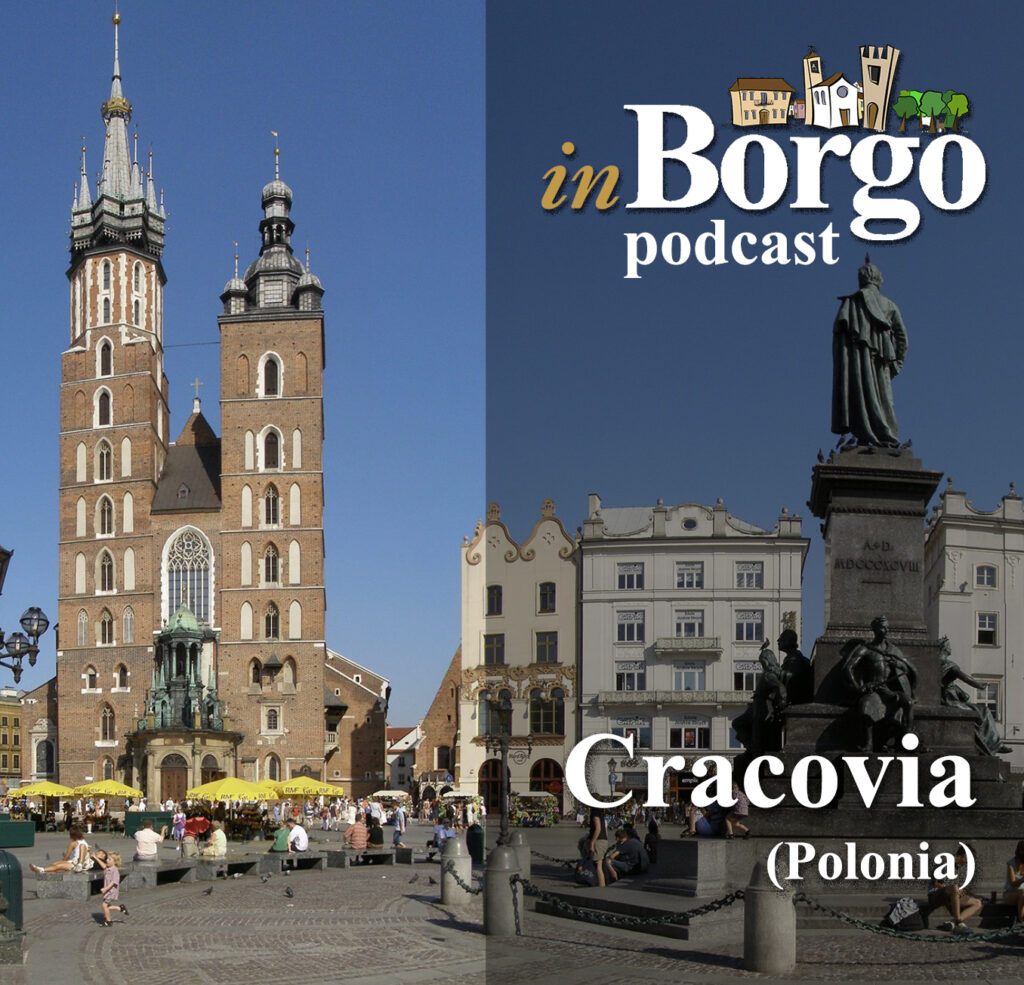Per la prima volta, Inborgo va all’estero. Grazie ad Anna, una guida della città, scopriremo le bellezze, la storia e le leggende di Cracovia, senza alcun dubbio la più bella città in Polonia e una delle più belle in Europa. Per ascoltare il podcast cliccate sul link della piattaforma che preferite.
Cracovia è una delle più antiche città della Polonia meridionale, ed è seconda dello stato per popolazione e superficie dopo Varsavia. Cracovia è stata a lungo la capitale del paese e tutt’oggi è ancora il suo principale centro culturale, artistico e universitario. E’ sede della Università Jagellonica, la più antica del paese e una delle più antiche d’Europa. A Cracovia ci sono più di otto milioni di turisti.
E’ il primo sito UNESCO ad essere considerato tale in Europa ed è anche il primo centro abitato patrimonio dell’umanità dal 1978. Una leggenda vuole che Cracovia fosse stata fondata dal mitologico sovrano Krakus, che l’avrebbe costruita sopra una caverna occupata da un drago, Smok Wawelski.
Nel decimo secolo, era diventata un punto importante per il commercio, In quel periodo fu costruito il Castello di WAWEL e la Kościół św. Wojciecha (Chiesa di Sant’Adalberto).
Divenne molto importante quando Kazimierz Wielki. (Casimiro il Grande). fondò Uniwersytet Jagielloński ( L’Università Jagellonica).
Purtroppo Sigismondo III portò la capitale a Varsavia e Cracovia iniziò a perdere d’importanza.
Ricordiamo che La dama con l’ermellino di Leonardo è esposto al Museo Nazionale di Cracovia. E da solo vale il viaggio.
Per chi non lo sapesse ritrae Cecilia Gallerani. Fu l’amante di Lodovico il Moro e generò Cesare Sforza.
Il dipinto è stato in possesso per ben 200 anni della nobile famiglia polacca Czartoryski. Fu poi venduta insieme all’intera collezione allo stato Polacco. E’ stato l’unico caso di un opera Leonardesca in mano ad un privato.
Cracovia è ricchissima di architetture interessanti.
Abbiamo già detto che il centro storico è patrimonio dell’Unesco. Questo vi fa capire la sua bellezza.
Un mix di architettura, pirma gotica, poi rinascimentale ed infine barocca, decorano la città vecchia.
Iniziamo però dalla piazza del Mercato.
La più grande piazza d’europa di epoca medievale chiamata Rynek Głowny . è grande 200 metri per lato.
Intorno a questa piazza ci sono palazzi del 600 e del 700, il Sukiennice, ovvero il grande mercato dei tessuti, la torre civica e la Basilica di Santa Maria.
Mentre sulla collina di Wawel sorge l’omonimo castello dove risiedeva il re della Polonia.
Li ci sono alcune chiese, la cattedrale dove ci sono le tombe dei re polacchi e la cappella di Re Sigismondo in uno stile influenzato dall’architettura italiana dell’epoca, e poi anche la bellissima chiesa di San Pietro e Paolo. Anche questa di ispirazione italiana.
La chiesa più conosciuta è la basilica di Santa Maria.
STA IN PIENO CENTRO E POI SI NOTA MOLTO VISTO CHE LE SUE TORRI SONO ALTE 80 METRI.
C’è una curiosità che i turisti sicuramente noteranno. Da una delle due torri, ogni ora viene suonata l’HEJNAL, che signfica chiamata a raccolta.
Dall’ultima invasione dei tartari, questa tradizione non è stata mai interrotta.
Nella stessa Piazza del Mercato, è situata la piccola e pregevole Chiesa di Sant’Adalberto (Kościół św. Wojciecha), che con circa mille anni di storia è una delle più antiche chiese in pietra erette in tutta la Polonia.
Antica è anche la Cattedrale del Wawel. Li venivano incoronati i sovrani polacchi.
Fu costruita nel quattordicesimo secolo. e all’interno ch’è la famosa cappella di Sigismondo.
forse il più bell’esempio di architettura presente in città.
Poi c’è La Chiesa di San Floriano che ospita un mausoleo dove sono custodite le reliquie di San Floriano, che è il santo patrono della Polonia.
In città ci sono 28 tra musei e gallerie d’arte, come il Museo Nazionale (Cracovia), il Museo Czartoryski (Muzeum Czartoryskich), il Museo sotterraneo.
Poi c’è la torre del Municipio alta 70 metri da dove si può ammirare tutta la città.
Un oggetto incredibile e di notevole interesse è il Globo Jagellone.
È il primo globo al mondo in cui è stata raffigurata l’America e risale al sedicesimo secolo. Si trova nel Museo dell’Università Jagellonica.
Una università molto importante.
Quì ha studiato anche Niccolò Copernico.
Per chi invece ama passsegiiare nel verde abbiamo il parco Planty, lungo 4 km ED è GRANDE 21 ettari E STA proprio vicino il centro.
Nelle vicinanze di Cracovia abbiamo altre cose come la miniera di sale di Wieliczka (patrimonio dell’unesco) a circa 10 km.
Vi sono 300 km di cunicoli e anche un lago salato.
La particolarità è la Cappella di Santa Kinga dove tutto è realizzato con il sale, anche i candelabri.
a 45 km troviamo il triste e famoso campo di concentramento di Aswictz.
Per chi volesse visitare Cracovia, ricordiamo che non c’è ancora l’euro e che bisogna convertirll in Zloty, che al momento è circa 4,5 per un euro.
Per darvi un idea un hotel 3 stelle costa circa 45 euro e lo stesso una cena per 2. Un caffè un euro.
Le temperature variano tra i 24 e i 12 ad Agosto mentre vanno da 3 a -4 a Dicembre.
Buon Viaggio.

